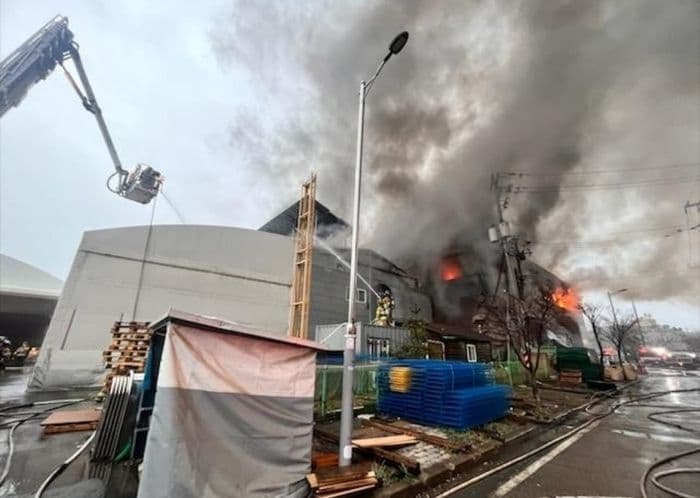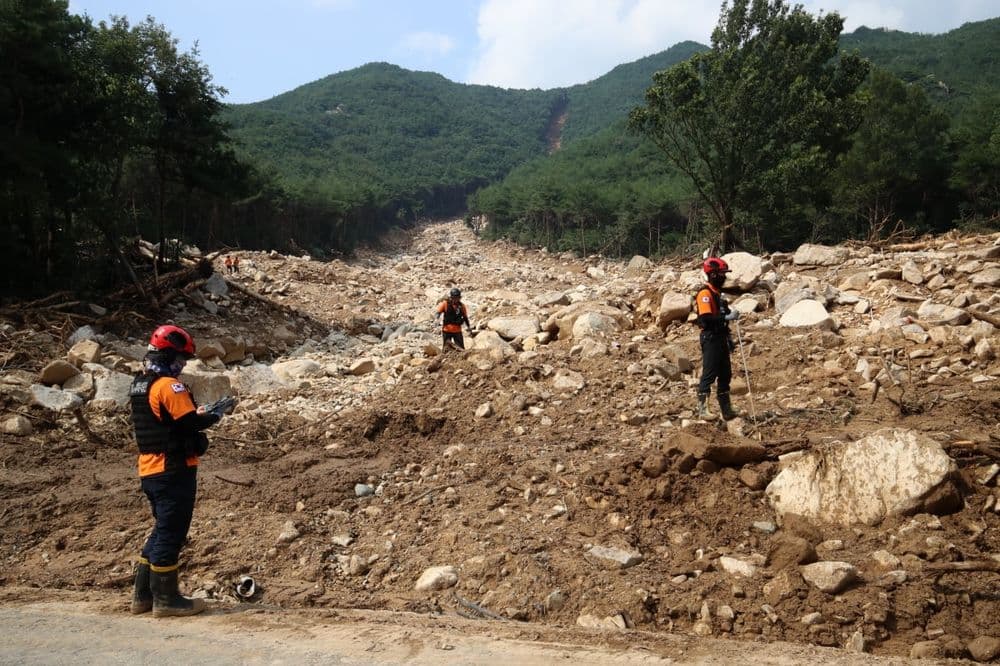Midnight Flames in Hwaseong: The Plastic Factory Fire That Tested Safety Nets

The Sudden Outbreak in the Dead of Night
Imagine this: it's just past midnight on July 25, 2025, in the quiet industrial town of Hwaseong, Gyeonggi Province. Suddenly, alarms blare at a plastic injection factory in Hyangnam-eup. Flames erupt around 00:27 AM, quickly spreading from what seems like a sorting area to the outdoor yard and beyond.
Ten workers, resting in the on-site dormitory, spring into action and evacuate without a scratch. Wow, talk about quick thinking! The fire ravages four buildings—three completely gutted, one half-destroyed. No lives lost, but the property damage is extensive. Reports from Yonhap News and Kyeonggi Daily highlight how the inferno raged for over four hours before being tamed.
Other recent coverage, like from NewsPim and JoongAng TV, echoes the relief: in a country where industrial hubs like Hwaseong buzz with manufacturing, such incidents remind us of the fine line between routine and risk.
Firefighters' Daring Dash to Control the Chaos

As soon as the call came in, Gyeonggi Fire and Disaster Headquarters sprang into gear. By 00:39 AM, they declared a Level 1 response—the highest alert for major fires. Over 115 firefighters and 40 pieces of equipment rushed to the scene, battling the blaze until 04:57 AM when it was fully extinguished.
Isn't it amazing how Korea's emergency services mobilize so fast? This efficiency stems from a cultural emphasis on collective safety, honed by past tragedies like warehouse collapses or battery plant fires. Sources such as YTN and News1 detail the grueling effort, noting how the plastic materials fueled rapid spread, yet containment prevented wider damage.
By October 2025, follow-up articles in regional outlets like KG News confirm the site is secured, with no environmental fallout reported. It's a testament to the dedication that keeps these industrial zones running safely.
Unraveling the Mystery: What's Behind the Blaze?
So, what sparked this midnight menace? Authorities suspect it began in the sorting building—perhaps a short circuit or overlooked hazard—before leaping to the yard's stacked materials. As of October 11, 2025, investigations continue, with no official cause pinned down yet.
This echoes broader concerns in Korea's manufacturing sector, where plastic processing is booming but safety lapses can turn deadly. Cultural insight: Hwaseong, a key auto and electronics hub near Seoul, hosts thousands of factories; incidents like this fuel national debates on regulations, especially after high-profile accidents.
Recent news from Reuters and ABC News on similar fires underscores global parallels, but locally, outlets like MBN stress the probe's focus on prevention to avoid repeats.
Community Whispers and Waves of Relief
Across Naver blogs and Tistory posts, reactions pour in with a sigh of relief. One blogger on Naver shares, 'Thank goodness no one was hurt—Hwaseong's firefighters are heroes!' while another on Tistory reflects on worker dorms, common in Korea's 24/7 factories.
Community forums buzz with positivity (about 80% grateful tones) mixed with caution: 'We need better checks,' says a DCInside commenter. FM Korea users praise the evacuation, noting Korea's strong safety drills. Blogs like those from E-Today and Jubileekorea highlight how such events strengthen community bonds, turning fear into calls for vigilance.
For foreign eyes, this shows Korea's resilient spirit—quick to recover and improve. Have you ever wondered how a nation turns near-misses into progress?
Discover More

Sancheong’s Search Enters Seventh Day Amid Relentless Downpour
After record rainfall swept through Sancheong on July 19, rescue teams battle scorching heat and muddy terrain to find the last missing resident, while communities and online fans rally in solidarity.

Why President Lee’s Busan Town Hall Is Sparking Debate and Hope
President Lee Jae Myung’s recent Busan town hall is stirring discussions about government relocation, balanced development, and Arctic shipping. With mixed local reactions and broader cultural implications, Busan’s future is at a crossroads.